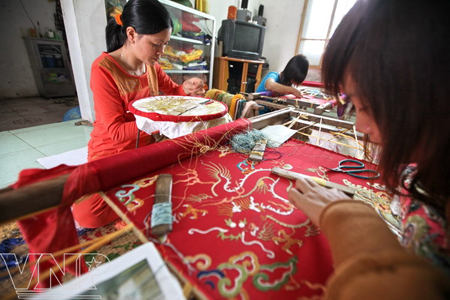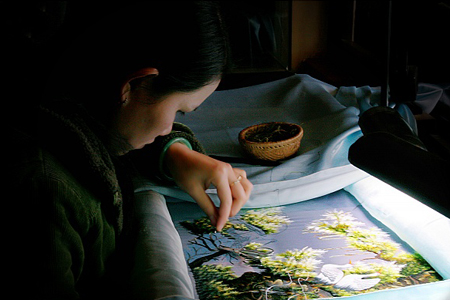Quat Dong village, located in Thuong Tin district, twenty kilometers south from Hanoi, is the inheritance land of traditional embroidery. Embroidery art works in Quat Dong village have stolen the hearts and minds of foreign and domestic customers around the world with their traditional embroidery in this most-famous embroidery village.

The traditional craft has a long history of existence (for thousands of years). The embroidery techniques first marked in Vietnam by embroidered letters on clothes and silk in the first century, In the Ly Dynasty, the Imperial Concubine Y Lan also taught palace maid these techniques. However, Le Cong Hanh was considered the truly ancestor of embroidery. Born in 1606, in Quat Dong village, he became a well-known scholar of his time as a member of the King’s envoy in China. After returning from his king's envoy term in China, he brought back the embroidery craft of the Chinese and gave it to his neighbors and residents in surrounding communes. Ever since then, he has been regarded as the master and patriarch of Vietnamese embroidery. To the onlooker, it may seem to be simple or relaxing work; however this work requires an extremely skillful and steady hand, an eye for the most intricate details, a demanding concentration, and a thorough commitment to producing only the highest quality.
The beauty and quality of the village's products has been well-known all over the world.

